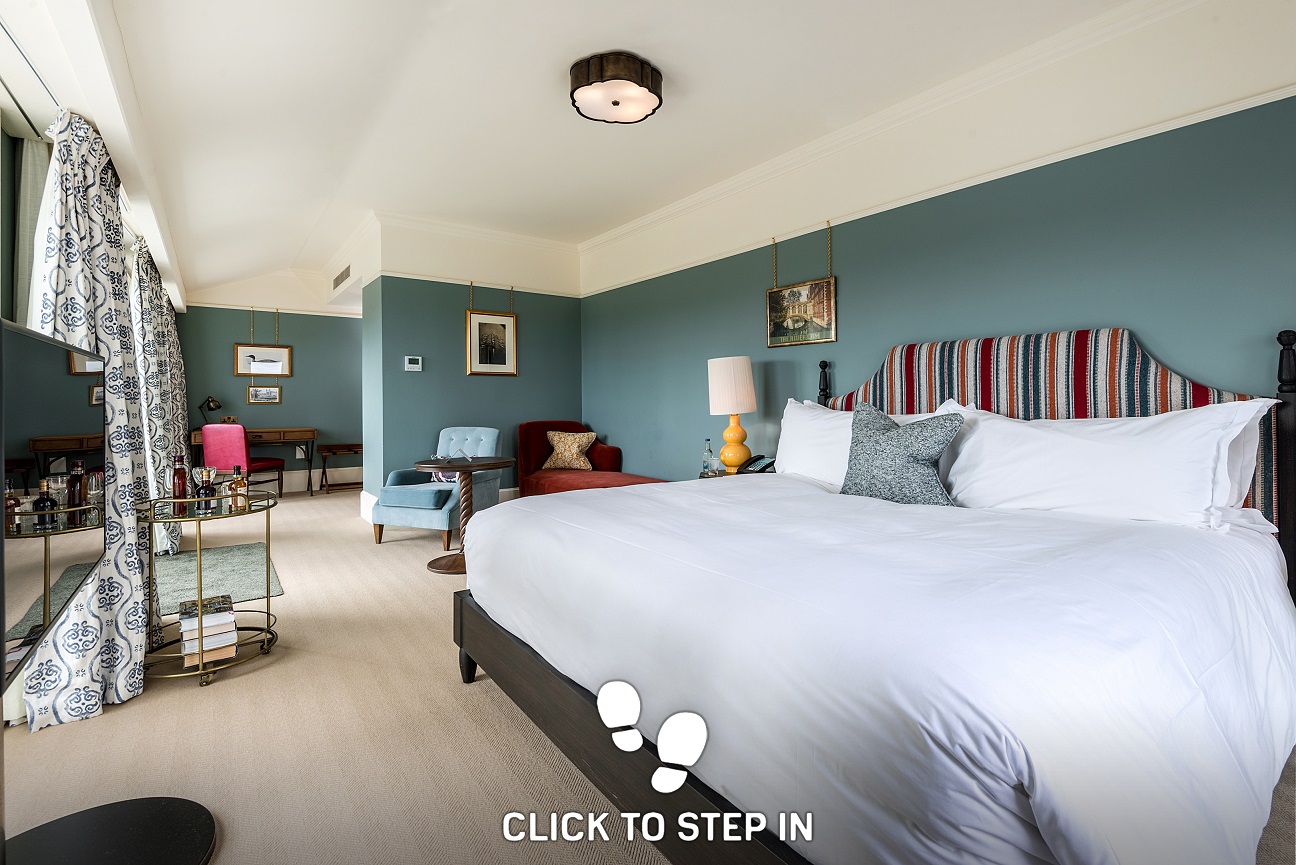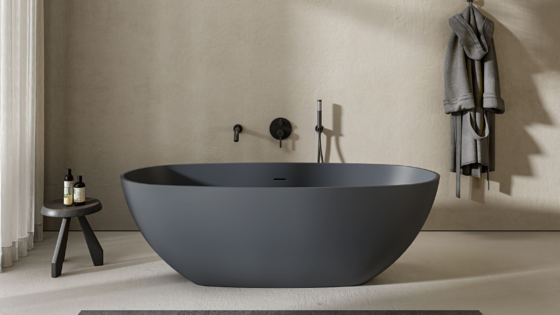Combining the best of British interior design and architecture, the University Arms in Cambridge is an effortless reflection of old and new. Editor Hamish Kilburn checked in to the Franklin Suite – and spoke to the leaders behind the project – to unearth the fascinating design story that’s written inside…
In the race for luxury in tier two cities around the United Kingdom, Cambridge city centre’s lack of statement hotels doesn’t exactly rank it highly among others.
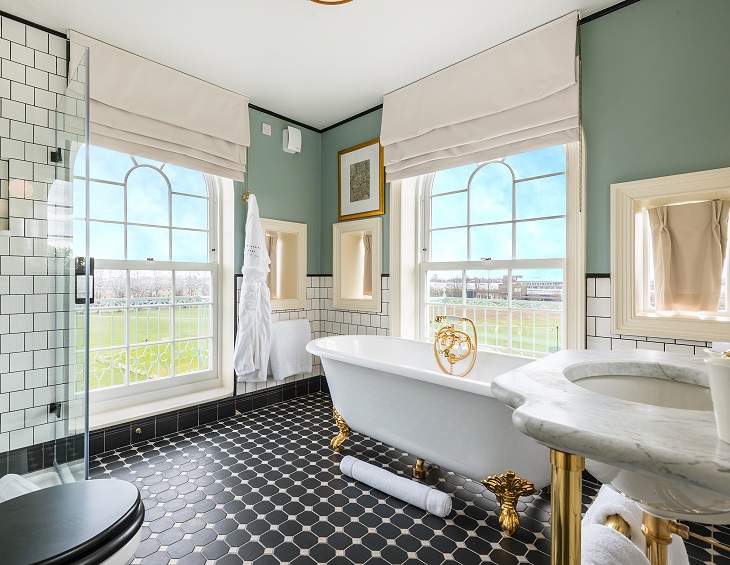
Despite the city being riddled in history and context, substandard independents remain firm, not willing to set themselves aside from others in regards to design. But amidst the unimaginative and limited hotel scene, things are changing and there is one property in particular that is shaking up the competition to become one of the UK’s best luxury hotels. Cue the monumental unveiling of University Arms, Cambridge.
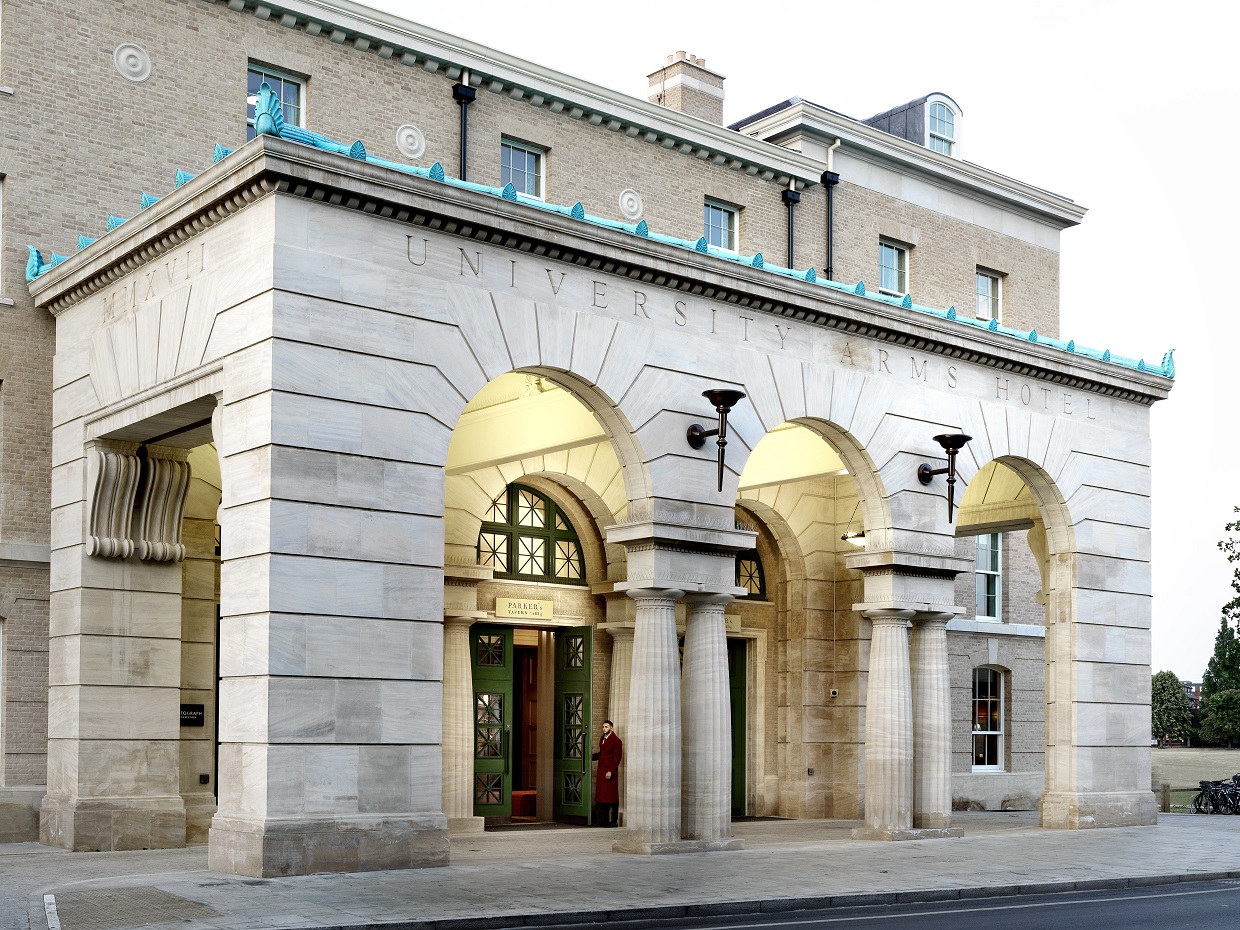
Image credit: University Arms, Cambridge
The 193-key hotel, which started life in 1834 as a coaching inn, reopened its grand doors in August of last year as interior designer Martin Brudnizki’s first full completed hotel project in the UK. “Cambridge has a really rich story that’s not just academic,” Brudnikzi told Hotel Designs. “It has a flourishing art scene – Kettle’s Yard is a haven for modern British art – and a food scene that’s worth investigating further. Of course, the architecture is wonderful and really quite awe-inspiring, however the city also has a unique sociable atmosphere. With it being small, you easily feel part of the city even after just a few days.”

Click here for interactively view room no. 201, the Stephen Hawking Suite | Image credit: ACT Studios
Following a number of large fires that broke out in the hotel, the most recent in 2012, University Arms closed in 2016. Working on the architectural restoration project from concept to completion, the team at John Simpson Architects were briefed to create new guestrooms, public areas, a gym and functional back-of-house spaces. “In terms of architectural language, the brief was to create a timeless appeal,” John Simpson from the architecture firm told Hotel Designs. “We wanted to create an architecture that honours the traditions and creates an aura that is present in so much of the historic buildings in the city.”
While the hotel’s shell was on the boards, Brudnizki and his team took the mass of inspiration from the history and culture around the city and infused it into thoughtfully curated interiors. “I always knew we wanted to create a hotel that reflected the academic heritage of Cambridge, whilst also feeling fun and approachable,” added Brudnizki. “The hotel is in the perfect location for university parents to stay at when visiting children or for those visiting the city for a weekend break. With this in mind, we created a hotel that combined academic references – the tie-patterned carpets, suites named after famous academics and the restaurant that feels like a college dining room – with comfort and elegance.
Guests now enter the hotel through an extravagant Porte Cochere entrance. “This element of the design references the scale style of the neighbouring Downing College, highlighting the historic association the hotel always had with the university,” Simpson added.
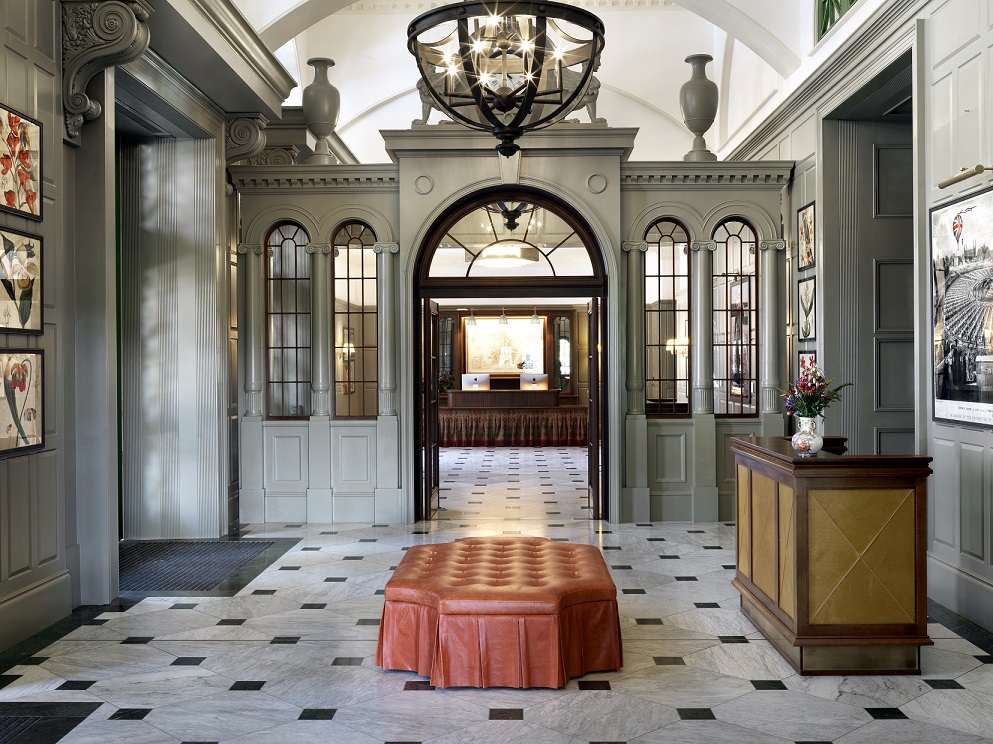
Image credit: University Arms, Cambridge
The large lobby is complete with two striking chandeliers that hang above both the minimalist check-in area and the concierge desk. On the walls, art curated by Adam Ellis hangs on chains and has been inspired by Cambridge’s roots, its past heroes and heroines and its many eras of charm. A poster-style piece “The Man in the White Suit” next to the lifts suggest that this hotel has been designed by and for the modern traveller to enjoy.
Upstairs, the corridors and guestrooms include nods at every turn to the heritage of the city. For example, the carpet that leads to the guestrooms and suites has been designed to replicate colour and style of the original Cambridge College tie. Each of the suites are named after a significant individual who had a relationship with the city and the interiors represent the character of the personality. The Franklin Suite, for example, was named after Rosalind Franklin, an English Cambridge-graduate chemist who made contributions to the understanding of the molecular structures of DNA, RNA, viruses, coal, and graphite. The terraced suite located on the top floor includes literature about Rosalind Franklin that sit in a modern setting. “We wanted to make sure what we designed wouldn’t feel out of place or context,” added Brudnizki. “With this in mind, it was important for us to work closely with John Simpson, who is an expert in classical architecture, as well as the local area. The best way for us to achieve this was through carefully selecting artwork that rooted the project to Cambridge and that would tie the narrative together.”
In all the rooms, which come in four categories, attention to detail is immediately evident. The ‘do not disturb’ signs are shaped as bookmarks, while the writing desks – think ink quill and paper rather than emails – were inspired by the traditional student desks that are finished with coloured leather tops.
The bathrooms in the suites, complete with underfloor heating, are both stylish and lavish. Victoria + Albert baths positioned by the windows, accented with gold legs, create an immediate statement – as do the gold shower fittings from Vado. The walls, meanwhile, have been painted in the same light blue that is associated with the city, keeping the interiors balanced and tame in all the right places.
If the lobby lounge area is described as the heart of the hotel, the guestrooms the brains, then the soul is quite rightfully reserved to the bar and restaurant located on the ground floor. Brudnizki’s masterful hands have created a welcoming environment that has attracted not only guests but also loyal locals. Guests entering for dinner or to have a drink at the bar enter via a separate entrance to those staying at the hotel. “They still arrive at the front of the building, through grand doors, so there is a sense of occasion and not a sense of separation,” explains Brudnizki. “The bar itself includes a spacious lounge area, with mixed seating and larger tables to encourage communal imbibing. During the day you can use the bar as a place to work or even enjoy an afternoon tea. Whilst at night it becomes a great place to sit back with friends and enjoy drinks before dinner in parker’s Tavern next door.”
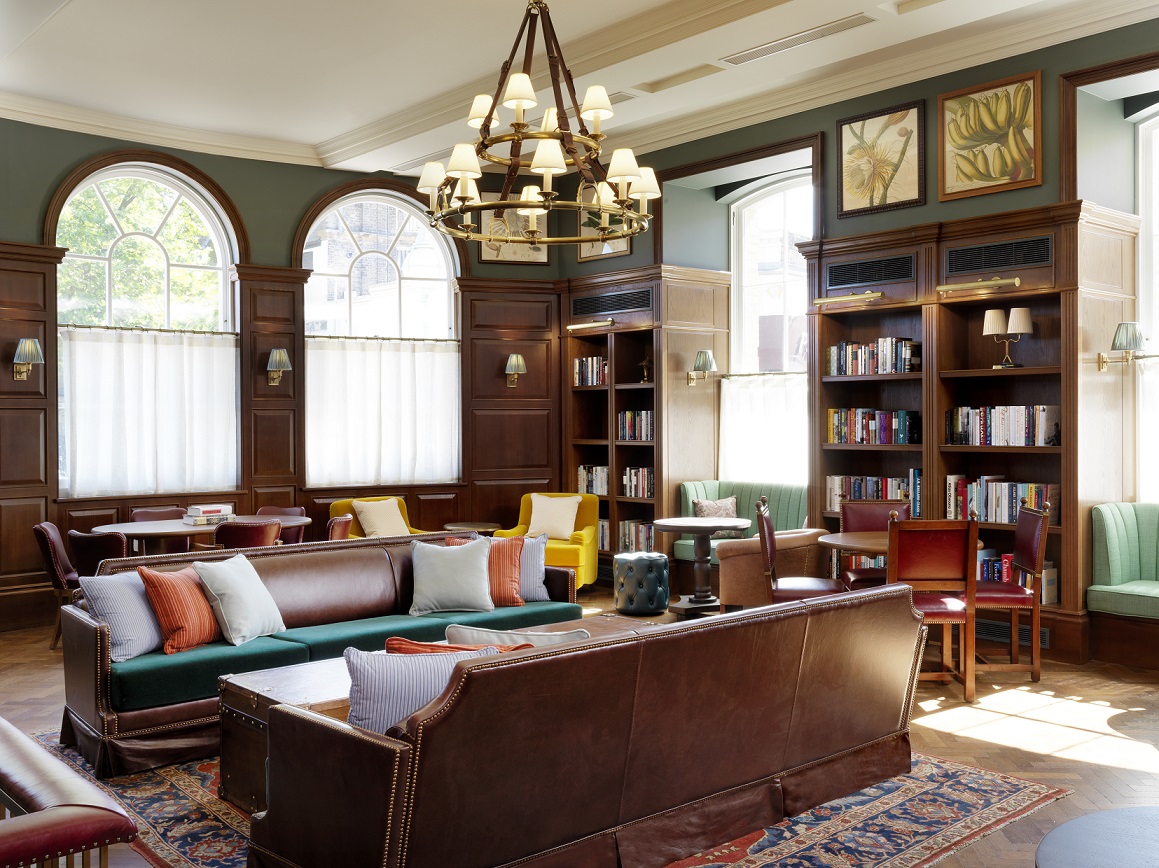
Image credit: University Arms, Cambridge
The public areas overlook Parker’s Piece, a large plot of grass that is rumoured to have been where the rules of Football Association emerged from (probably over gin and tonics). The library, which, when pushed, Brudnizki admits to being his favourite area of the hotel, is a clever blend of indoor/outdoor interiors, designed to be light, bright and open for all.
It’s refreshing to see an upscale hotel in Cambridge bravely achieve what no other hotel in the area has managed to; take on the history and heritage of the city and seamlessly blending into the architecture and the fabrics. Through true collaboration between MBDS and John Simpson Architects – both of which were winners at The Brit list 2018 in their categories – University Arms is now a timeless gem, in a league of its own operating in a modern city with a storied past.
Main image credit: ACT Studios

